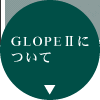予定表 -詳細情報-
| 件名 | BS Luigi Curini氏 |
| 開始日時 | 2009年 12月 15日 (火曜日) 10時40分 (GMT+09:00) |
| 終了日時 | 2009年 12月 15日 (火曜日) 12時10分 (GMT+09:00) |
| 場所 | 1号館303教室 |
| 詳細 | 【報告者】 Luigi Curini氏 (ミラノ大学 政治学部准教授) 【タイトル】 Ideological proximity and valence competition. Negative campaigning through allegation of corruption in the Italian legislative arena from 1946 to 1994 (and a short comparison with Japan 1960-1993) 【概要】 In this study, we have considered the possibility for the parties to invest in negative campaigning – a behavior that, in our framework, involves blaming alleged insufficiencies of the rival concerning commonly shared values. Within a simple one-dimensional model, we deduced that the parties’ incentive to “attack” each other increases with the parties’ proximity on the left–right space. We tested our hypothesis on an Italian case, focusing on the emphasis placed by the Communist Party on political corruption issues during the government investiture debates that spanned from the post-war period until 1994, when the traditional party system abruptly collapsed. The results were consistent with our theoretical analysis. In particular, it can be argued that the judicial investigations on political corruption during the early 1990s, which are generally considered to be a major cause of the demise of the party system, could have been overcome with no such consequences under different spatial relations between the government parties and the main opposition party. In the final section, we extend our analysis by comparing Italy with the Japanese case (from 1960 to 1993). Keywords: negative campaigning, spatial theory of voting, Italian party system, political corruption |
| カテゴリー | 政治経済学基礎セミナー・ランチタイムセミナー |








